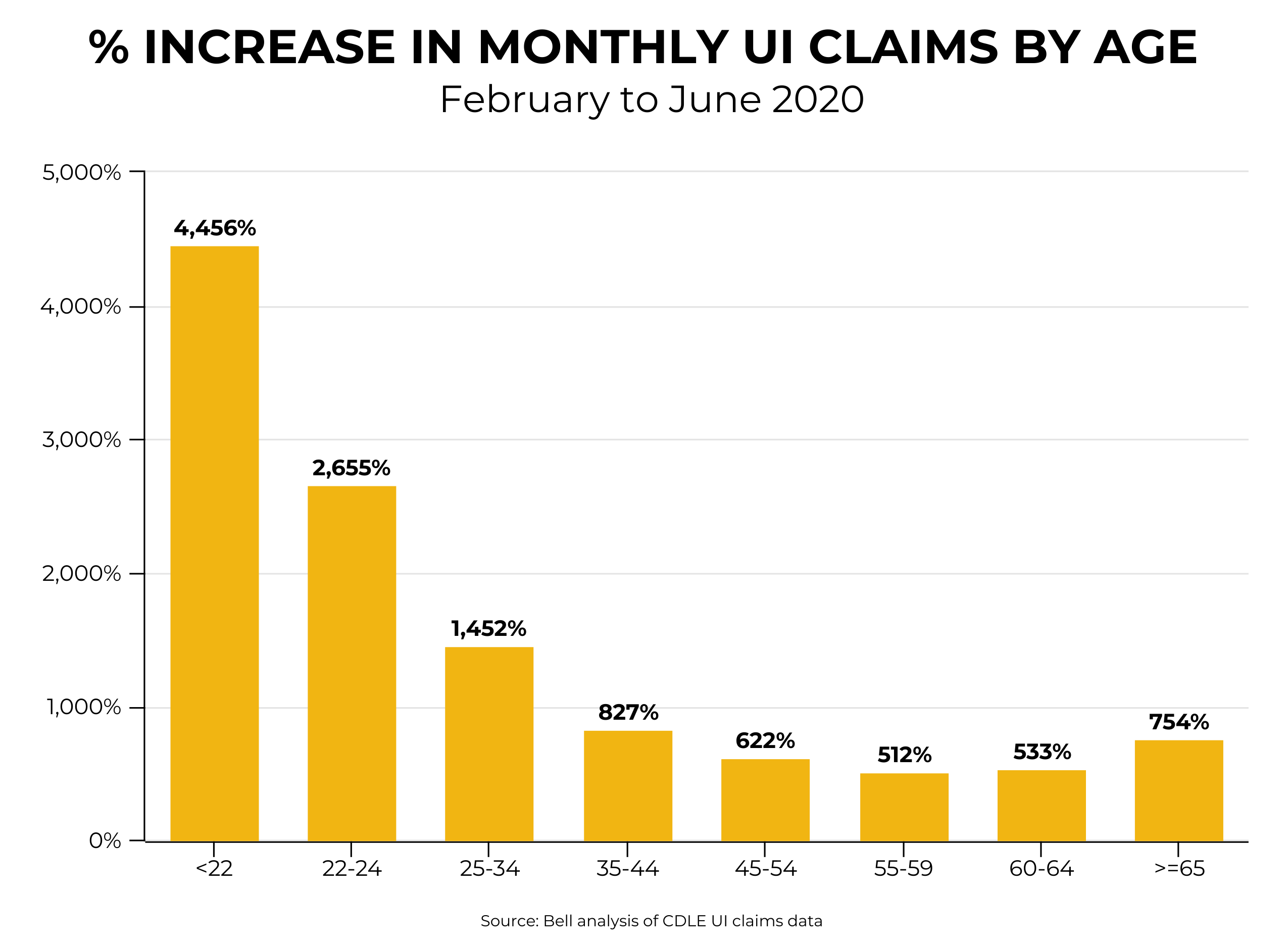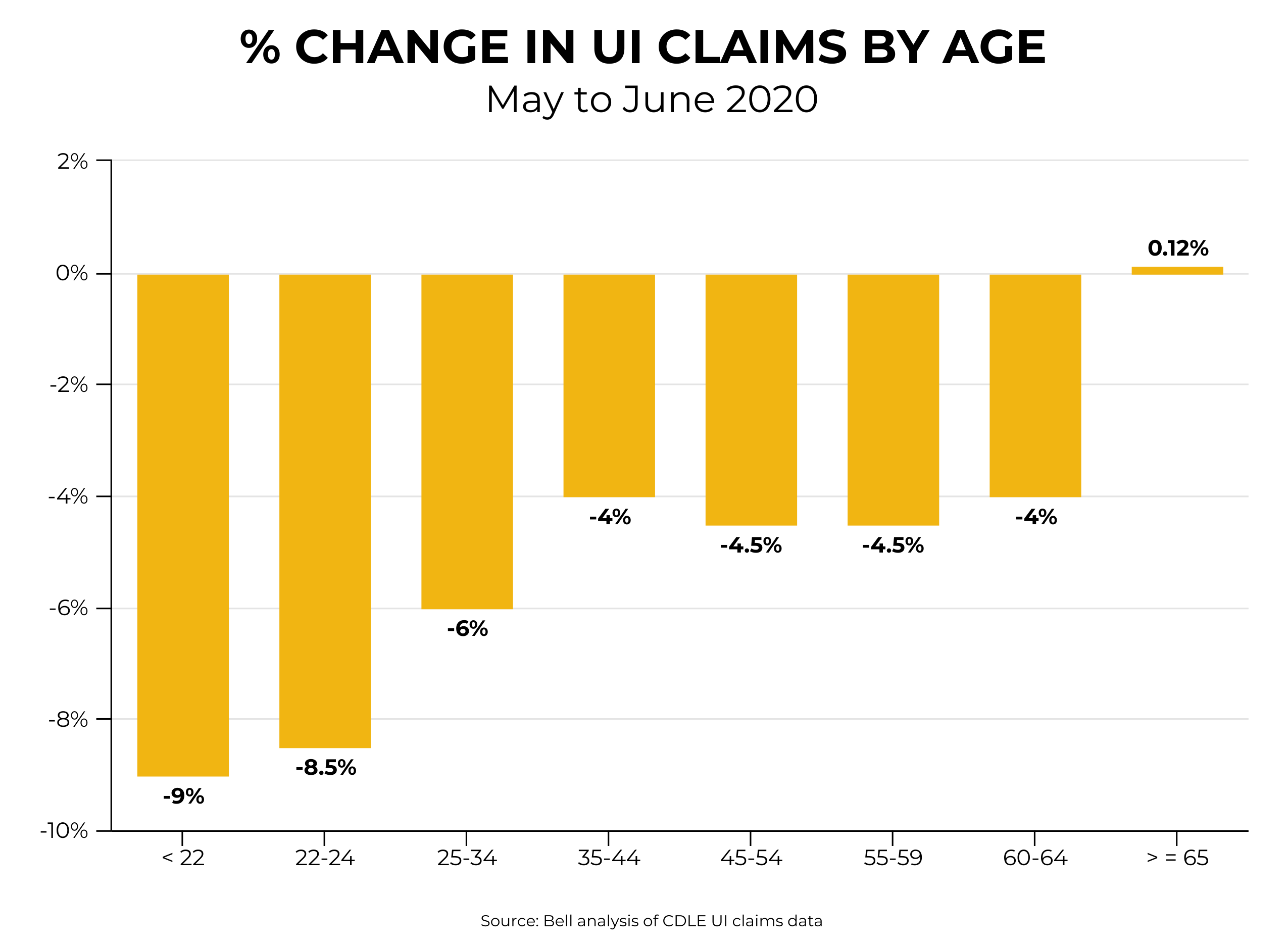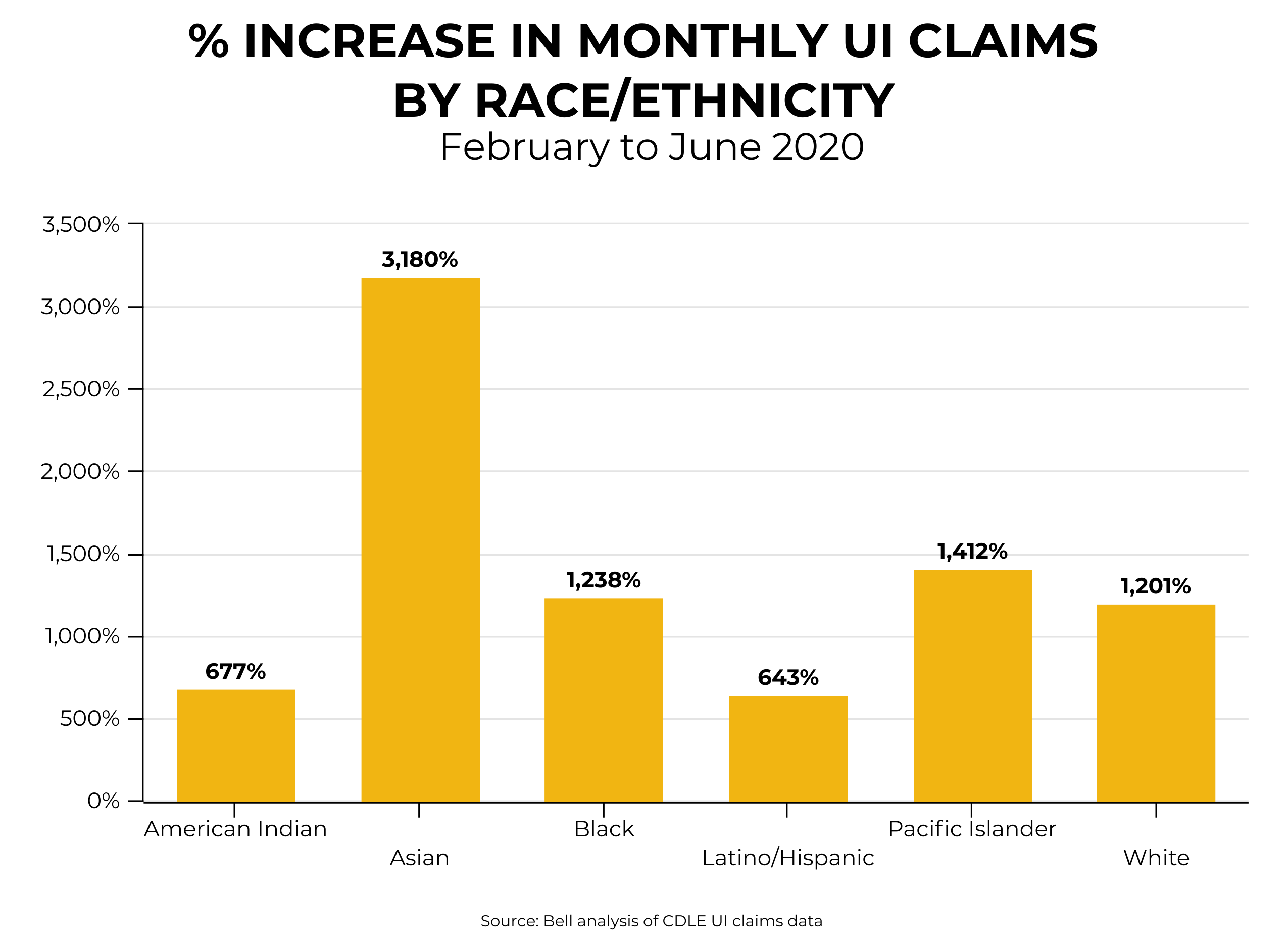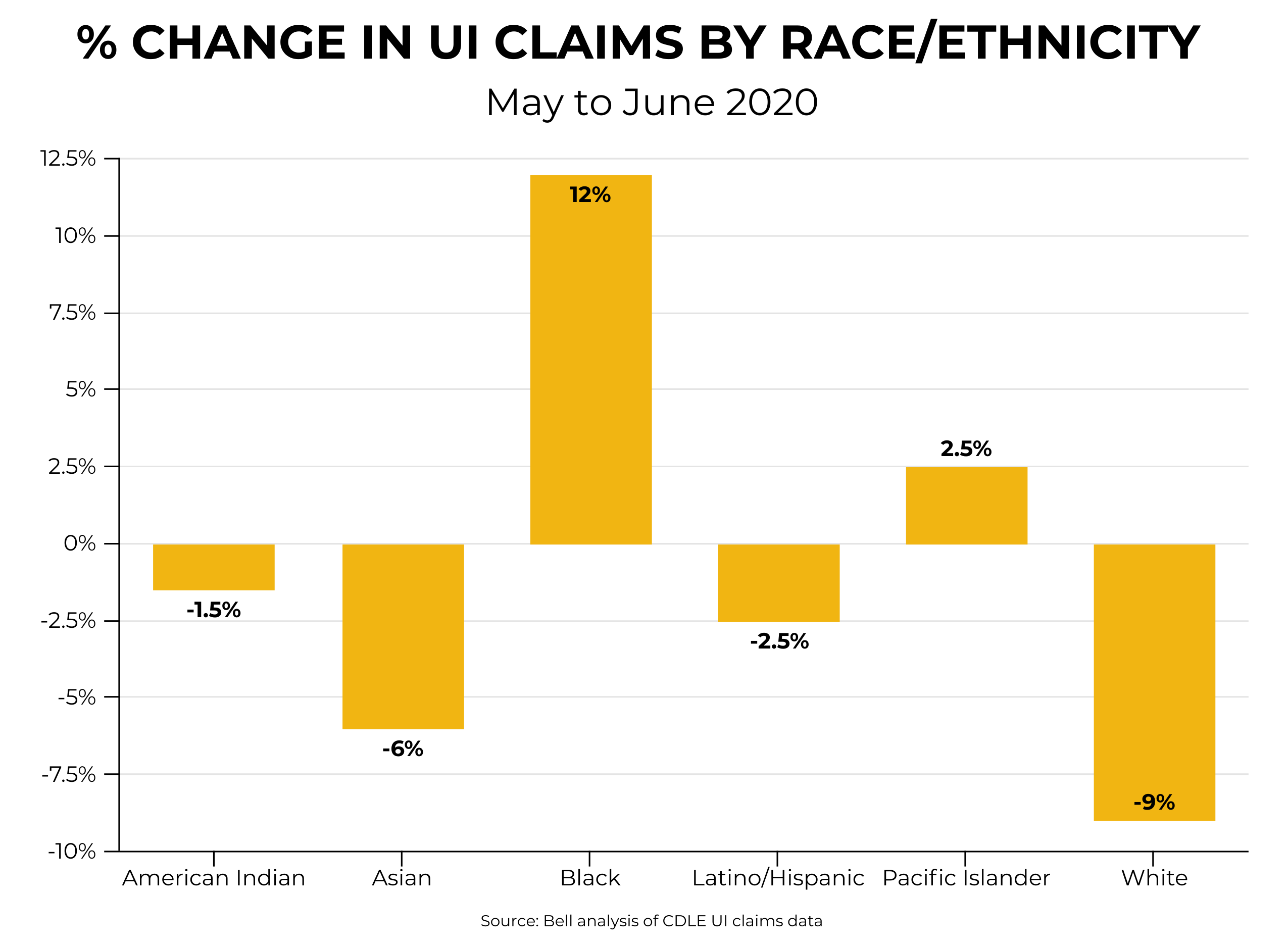What We Know About Unemployment in Colorado
Within a few short months, unemployment in Colorado rate has skyrocketed, growing from 2.5 percent in February to 10.5 percent in June. According to the U.S. Census Bureau’s Household Pulse Survey, since the pandemic started, almost half of all Colorado adults have experienced a loss in employment income.
Such massive disruptions guarantee the economic impacts of COVID-19 are felt by huge swaths of Coloradans. However, as with almost any phenomenon, the effects are disproportionately felt by certain demographic groups. By examining state unemployment insurance (UI) claims data, we see this includes Colorado women, older and younger workers, and those from communities of color.[i] Moving forward, a comprehensive understanding of employment trends will help us adopt the solutions we need to create an equitable economic recovery for all.
Impact on Women
In recent recessions, men have typically experienced greater spikes in unemployment than women. However, throughout the past few months, this trend has been reversed, with more women than men filing for unemployment in Colorado.
Percentage of UI Claims by Gender
| Male | Female | |
| 2001 Recession | 54% | 46% |
| 2007 – 2009 Recession | 61% | 39% |
| February – June 2020 | 48% | 52% |
Over the past several months, the following suggests a lessening of this phenomenon:
- Between May and June, UI claims by Colorado women decreased by 11 percent, 3 percent more than for men; and
- In 10 of the 15 weeks between the start of April and the middle of July, women saw larger weekly drops in new UI claims than their male counterparts.
It’s likely, UI claims for women are decreasing as restrictions loosen for personal care services, positions which are disproportionately filled by women. These trends however could change with resurgences in the virus, and if our ongoing and growing care crisis is left unaddressed.
Impact on Older & Younger Workers
As a result of inherent factors like having less tenure, younger workers are often the first to lose their jobs during economic downturns. That trend has certainly held over the past few months, where younger Coloradans have seen the largest growth rates in unemployment. What would likely have occurred naturally during a recession however, is being further fueled by the especially large hits to the hospitality, food service, and entertainment industries — fields which hire a disproportionate share of younger workers.

Though the youngest workers have experienced the greatest growth in unemployment in Colorado, it’s also important to note this same demographic is going back to work quicker than any other age group. As seen in the chart below, this contrasts to older workers, and particularly those 65 and older — the only age cohort to see an increase in UI claims between May and June.

It’s still too early to completely identify this recession’s long-term age-related trends. However, what we’ve observed through June follows a pattern we’ve seen throughout past recessions, where younger workers receive the hardest initial hit, but older unemployed workers face some of the most significant challenges returning to paid work.
Impact on Workers of Color
Between February and June, all racial and ethnic groups saw dramatic increases in their use of UI. However, no group saw a jump as large as Asian workers.

At first glance, these numbers may suggest, except for Asian workers, a relatively equal distribution of economic impact among races and ethnicities. However, it’s important to note: a) workers of color had disproportionately higher unemployment rates prior to COVID; and b) white individuals are returning to work faster than workers of color. As seen in the chart below, between May and June, whites saw the largest decline in UI claims, at the same time both Black and Pacific Islander workers experienced increases.

Considerations Moving Forward for Unemployment in Colorado
We know thousands of Coloradans are still facing significant job loss and economic disruption — a trend likely to continue for some time. With this knowledge, we must act to support these individuals, their families, and communities.
Need for Continued Federal UI Support
Through the federal CARES Act, congress made several impermeant changes to the UI system. Included was a provision for an additional, federally funded, $600/week for those receiving UI benefits. This money has been an important lifeline for both families and states. As seen in the chart below, these federal funds have been responsible for more than half of all allocated UI dollars in Colorado.

Unfortunately, these federal benefits expired at the end of July. At the time of this writing, a possible extension is being negotiated. Importantly though, if no action is taken, thousands of Coloradans will suffer — a disproportionate number of which will be workers of color, women, and those at both ends of the age spectrum.
Development of Targeted Solutions
The data shows COVID isn’t equally affecting all Colorado workers. Instead, race, ethnicity, age, and gender are shaping the impact of the virus. Recognizing and identifying these trends is an important first step to a strong recovery. However, as we move forward, this information must be used to develop ongoing, targeted supports and systems capable of meeting the needs of all Coloradans.
Continued Examination of Data on Unemployment in Colorado
Finally, it’s important to note the current economic situation continues to evolve and we only have comprehensive UI data through the end of June. We’ll need to evaluate new information to better understand and identify differential economic impacts.
COVID has caused near unprecedented economic disruption. As we continue to navigate the uncharted territory the virus has created, it’s incumbent upon us to recognize that recovery will not look the same for everyone. By understanding who is most acutely impacted by COVID, we can create the well-rounded, comprehensive, and tailored response all Coloradans need.
[i] For the analysis in this piece, UI data was used. This contrasts to the work of some national groups which have used the Current Population Survey (CPS) to identify demographic employment trends as a result of COVID. CPS data however was not used here because of CPS’s small, state-specific sample size.
